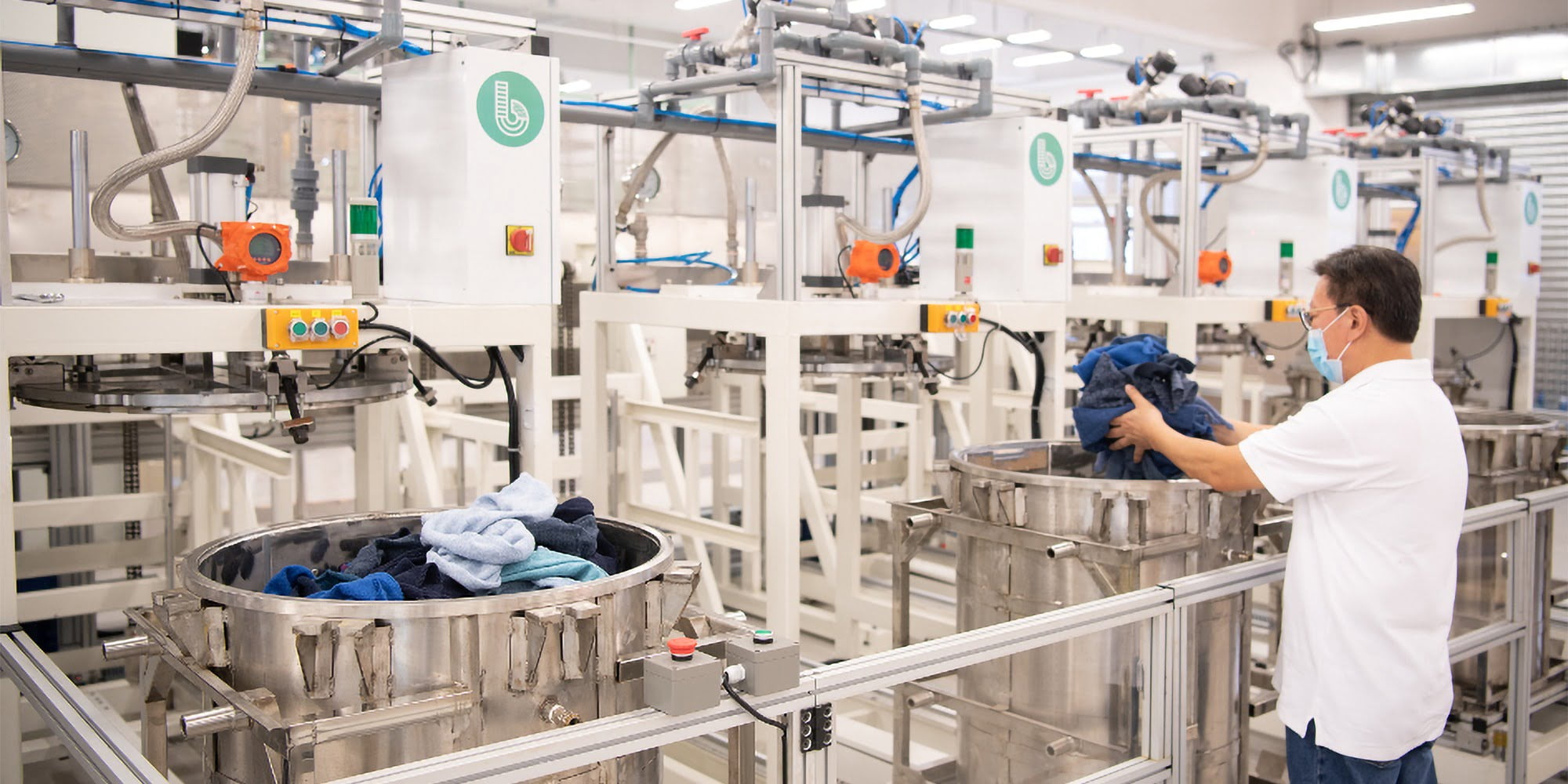Closing the Loop in the Fashion Industry
The Billie System by Novetex Textiles in Hong Kong
Company Overview
Established in 1976 as part of the Novel Group, Novetex Textiles is a yarn spinner located in Zhuhai, southern China. Novetex works with directional global trends to bring a stock service of qualities and colours that reflect up-to-date market needs. It strives to create premium quality yarns while committing to sustainable sourcing and production. In 2018, Novetex launched The Billie System in Tai Po, Hong Kong. With this sustainable initiative, the company upcycles textile waste into new yarn, thereby creating competitive advantage while addressing a pressing environmental issue.
Fashion – The Second Most Polluting Industry
It is said that fashion is only second to the oil industry in generating pollution. Indeed, the fashion industry accounts for about 10% of global greenhouse gas emissions. Part of this is due to the industry’s extensive use of resources. Cotton for instance is a thirsty crop – producing one kilogram of this fibre requires 20,000 litres of water [1]. Animal-derived materials such as wool have a high environmental footprint due to animal husbandry impacts such as land use, water consumption and green house gas emission. From the production of garments to their final disposal, the industry also generates substantial waste. Manufacturing clothes industrially requires many stages of sampling, as well as the creation of buffer quantities to allow for defects. At the end of their life, most clothes are simply discarded. Around 390 tonnes of textiles are sent to landfill daily in Hong Kong [2] even though 95% of the fabric could be recycled. Apart from saving significant volumes of water from growing virgin fibre, recycling textiles has the potential to reduce greenhouse gas emissions and free precious land for other uses.
Upcycling – Turning Waste Fabrics into Higher Value Products
The Billie System is the result of a collaboration between Novetex and the Hong Kong Research Institute of Textiles and Apparel (HKRITA). Through this successful partnership, Novetex brought to production-level this award-winning system, which combines both new and existing technologies to create an innovative upcycling method. The waterless mechanical system breaks down textile waste into fibres, which can be spun into recycled yarns and then knit into new fabric or garments.
The Billie System was initially designed to recapture value from textile waste. Generated by Novetex’s operations, while turning it into a potential stream of revenue for the business. It made perfect economic sense to solve a business pain point (accumulated waste) and create value at the same time (in the form of recycled yarn).
Textile waste from the fashion and hospitality industries is a first-world problem, and an efficient recycling journey requires convenient collection points. In the case of The Billie System, all of the steps of Novetex’s textile recycling operation are located in close proximity – Hong Kong and Zhuhai. Using Novetex’s core expertise in yarn spinning, the Zhuhai factory is able to provide the backend of spinning the recycled fibres into yarns. It also enables important savings in transportation costs and carbon footprint. Ultimately, The Billie System generates economic value for the business while addressing a major environmental challenge. In this way, Hong Kong’s first textile recycling mill is Creating Shared Value for the business and society.
Beyond this internal success, increasing demand for environmentally and socially responsible materials opened up opportunities for additional revenue streams. The company soon found that it could have a much larger impact by processing textile waste from outside sources and other industries. Where possible, The Billie System encourages the originator of the textile waste to use the repurposed materials, effectively closing the loop in the production cycle.
Creating Shared Value – the competitive advantage
Novetex is creating change in sustainable fashion by addressing the industry’s blatant waste problem. With a capacity to process up to three tonnes of textile waste per day, The Billie System can only handle less than one per cent of Hong Kong’s daily textile waste production – however, it’s a start, and it presents a concrete solution for companies willing to explore a circular model. While not all fibres are ideal or economical to recycle, natural fibres such as cotton, cashmere or silk are typically cheaper in their recycled forms than in their virgin versions, making the recycled yarns attractive to clients. Through this circular production system, Novetex highlights the value of what is traditionally considered as waste and makes recycled materials available to the market.
The Billie System provides the business with a solid competitive advantage by combining cost saving and revenue generation, while positively impacting the industry’s environmental footprint. By aligning profit with purpose, the company has capitalised on its core expertise to Create Shared Value. With the Billie System, Novetex has redefined productivity in the value chain in the textile industry. The initiative has potentially unlocked a significant pocket of growth for the company and the industry at large.
Beyond Repurposing – Changing Mindsets to Tackle Overproduction
Beyond recycling, Novetex hopes to address overproduction in the industry and advocate for a change in consumption habits. Each year the fashion industry creates about 150 billion pieces of clothing [3], not all of which are sold and worn. The excess items generate a huge amount of waste that simply cannot be solved through recycling efforts alone. Additionally, the distance of the garment-to-garment process needs to be as short as possible to make economic and environmental sense. This means the solution lies not in the scalability of upcycling initiatives such as the Billie System, but in encouraging a shift in current business models and practices.
This is why the company hopes the industry can more actively embrace circular economy principles and promote new ways of production. The perception of both pre- and post-consumer waste needs to shift in order to recognise the value that can be recaptured within the industry. Substantial change is required at various points of the whole process, starting from design, production and sales, all the way to consumption.
Equally instrumental in effecting change, garment producers must realise the consequences of how they source material. This implies breaking the silos within companies and bringing together departments that are often autonomous, such as design and inventory management teams. Post-consumer sorting capabilities must also be upgraded to satisfy quality standards in recycling materials. Yet consumption habits and marketing efforts remain the key contributors to the world’s overproduction problem. As such, these drivers have the power to disrupt current production patterns in the linear economy.
Public policy is another factor that can influence behaviour. To illustrate, if governments prohibited sending textile waste to landfills or incineration as a method for disposal, then brands would have more incentive to avoid overproduction.
Through its efforts, Novetex demonstrates how purpose-led businesses can innovate and address society’s challenges while building competitive advantage. Looking ahead, the company will contemplate further opportunities to scale up with a textile collection point in China as well as building new partnerships in various sectors.
| Societal Benefits | Business Benefits |
|---|---|
| Waste reduction – Diverting textile waste from landfills with a capacity of 3t per day | Cost savings – Saving warehousing costs and creating value out of Novetex textile |
| Resource saving – Reducing the demand for virgin natural fibres, reducing greenhouse gas emissions, and freeing up land for other uses | New revenue stream – Environmentally conscious customers are offered more upcycled quantities |
—–
[2] Environmental Protection Department, Hong Kong, 2018
[3] “Fashion has a misinformation problem. That’s bad for the environment,” Vox, 2020

